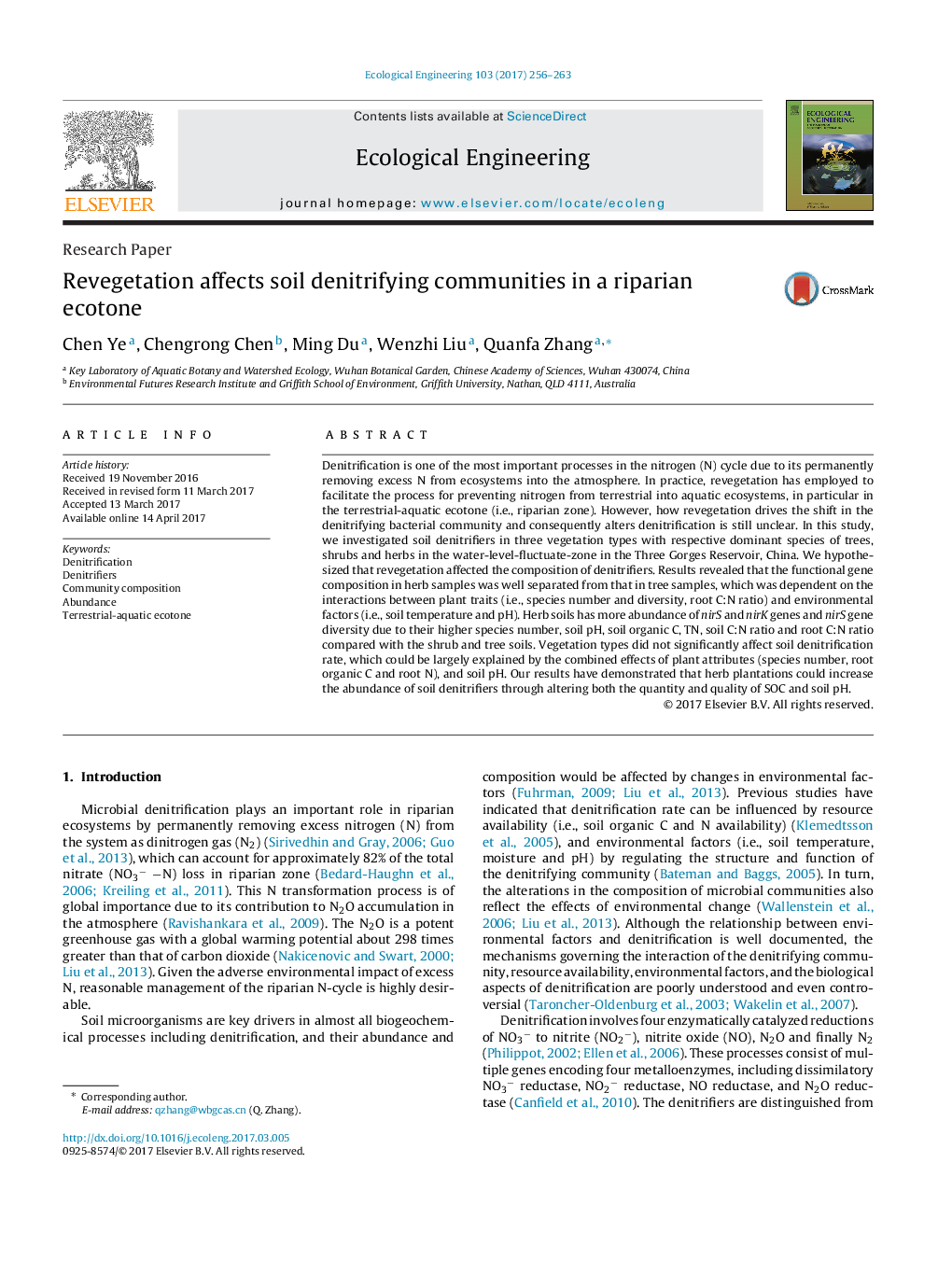| Article ID | Journal | Published Year | Pages | File Type |
|---|---|---|---|---|
| 5743585 | Ecological Engineering | 2017 | 8 Pages |
Denitrification is one of the most important processes in the nitrogen (N) cycle due to its permanently removing excess N from ecosystems into the atmosphere. In practice, revegetation has employed to facilitate the process for preventing nitrogen from terrestrial into aquatic ecosystems, in particular in the terrestrial-aquatic ecotone (i.e., riparian zone). However, how revegetation drives the shift in the denitrifying bacterial community and consequently alters denitrification is still unclear. In this study, we investigated soil denitrifiers in three vegetation types with respective dominant species of trees, shrubs and herbs in the water-level-fluctuate-zone in the Three Gorges Reservoir, China. We hypothesized that revegetation affected the composition of denitrifiers. Results revealed that the functional gene composition in herb samples was well separated from that in tree samples, which was dependent on the interactions between plant traits (i.e., species number and diversity, root C:N ratio) and environmental factors (i.e., soil temperature and pH). Herb soils has more abundance of nirS and nirK genes and nirS gene diversity due to their higher species number, soil pH, soil organic C, TN, soil C:N ratio and root C:N ratio compared with the shrub and tree soils. Vegetation types did not significantly affect soil denitrification rate, which could be largely explained by the combined effects of plant attributes (species number, root organic C and root N), and soil pH. Our results have demonstrated that herb plantations could increase the abundance of soil denitrifiers through altering both the quantity and quality of SOC and soil pH.
